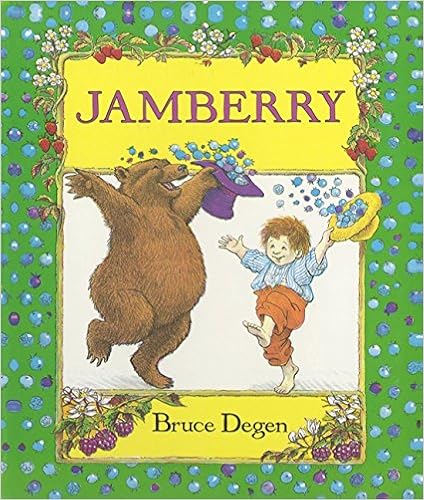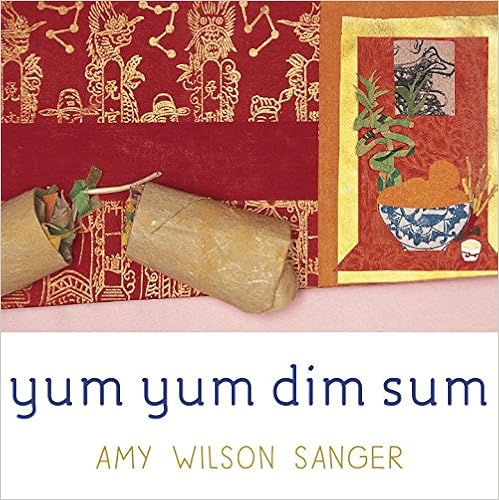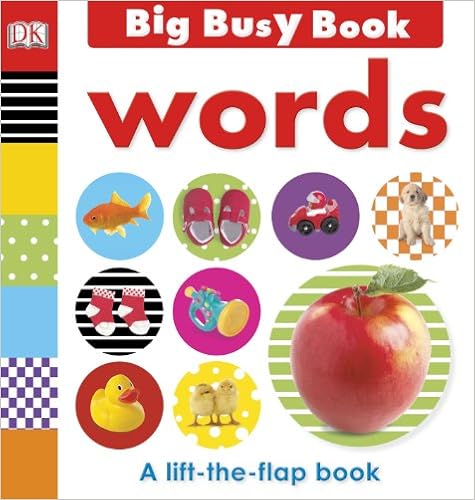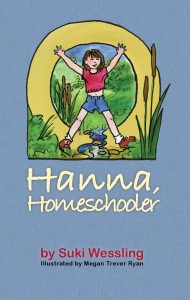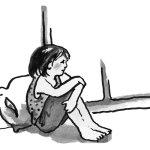In our house, picture books have a very long life. My thirteen-year-old refuses to get rid of her favorites, still!
Here are a few of the most memorable, with some memories to go along with them.
- Goodnight, Gorilla
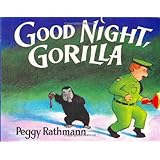 We’re a family of words, so what’s this book of very few words doing on our list? Someone bought it for us. We would never have bought a book with so few words. Our son became obsessed with it. Once our daughter came along, we introduced it to her and she was similarly entranced. I think it’s a combination of things that make this book so wonderful: Excellent illustrations, a bit of naughtiness, lots of tension in the plot even though there are no words. Degen is primarily an illustrator—I just learned that he illustrated the Magic School Bus books, one of my daughter’s favorites, and he also did Jamberry below.
We’re a family of words, so what’s this book of very few words doing on our list? Someone bought it for us. We would never have bought a book with so few words. Our son became obsessed with it. Once our daughter came along, we introduced it to her and she was similarly entranced. I think it’s a combination of things that make this book so wonderful: Excellent illustrations, a bit of naughtiness, lots of tension in the plot even though there are no words. Degen is primarily an illustrator—I just learned that he illustrated the Magic School Bus books, one of my daughter’s favorites, and he also did Jamberry below. - The Napping House
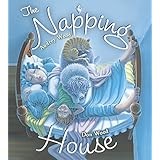 Like so many picture books, the illustrations make this book. Husband/wife team Audrey and Don Wood clearly do what is so hard for us non-illustrating authors: The text doesn’t say anything that the illustrations can’t say better. So the text doesn’t say what a lovely and weird relationship Granny has with her grandchildren. It doesn’t mention how charming and unusual their home is. It doesn’t say what time of day it is or that it’s raining. (There may be errors here; I am doing this all from memory and my children are now 13 and 17!) But the text adds the rhythm, building with a musical crescendo to the end (I won’t add any spoilers here). Beautiful book to look at; wonderful book to read out loud.
Like so many picture books, the illustrations make this book. Husband/wife team Audrey and Don Wood clearly do what is so hard for us non-illustrating authors: The text doesn’t say anything that the illustrations can’t say better. So the text doesn’t say what a lovely and weird relationship Granny has with her grandchildren. It doesn’t mention how charming and unusual their home is. It doesn’t say what time of day it is or that it’s raining. (There may be errors here; I am doing this all from memory and my children are now 13 and 17!) But the text adds the rhythm, building with a musical crescendo to the end (I won’t add any spoilers here). Beautiful book to look at; wonderful book to read out loud. - Eating the Alphabet
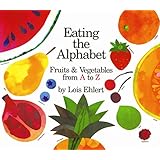 Alphabet books are ubiquitous and largely boring. This one is an exception. Ehlert makes collage illustrations that are endlessly cool to look at. They both look very realistic, and at the same time are clearly not realistic. She chooses a wonderful variety of vegetables to feature here, many that we had to look up and discuss. Both of my kids are [for the most part] good vegetable eaters, and I think part of that is due to celebrating vegetables as fascinating and exciting. (The other part is due to keeping a garden, and cooking well.) When I first typed the title of this book, I mistakenly called it Vegetables A to Z, one of my favorite cookbooks!
Alphabet books are ubiquitous and largely boring. This one is an exception. Ehlert makes collage illustrations that are endlessly cool to look at. They both look very realistic, and at the same time are clearly not realistic. She chooses a wonderful variety of vegetables to feature here, many that we had to look up and discuss. Both of my kids are [for the most part] good vegetable eaters, and I think part of that is due to celebrating vegetables as fascinating and exciting. (The other part is due to keeping a garden, and cooking well.) When I first typed the title of this book, I mistakenly called it Vegetables A to Z, one of my favorite cookbooks! - Where the Wild Things Are
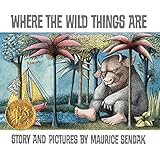 What can be said about this wonderful book has been said. It’s been a part of my life since I can remember—I just learned that it was published before I was born! I love how it’s both of its time and out of its time. A boy when it was written might just have one monster suit to play in. He didn’t have gadgets and Chinese plastic junk filling his room. He needed his imagination. But the book is also outside of time in that it addresses that fundamental frustration of childhood: lack of control. He can’t control his parents, he can’t choose what to eat for dinner. So he chooses to control the one thing only he has control over: his imagination.
What can be said about this wonderful book has been said. It’s been a part of my life since I can remember—I just learned that it was published before I was born! I love how it’s both of its time and out of its time. A boy when it was written might just have one monster suit to play in. He didn’t have gadgets and Chinese plastic junk filling his room. He needed his imagination. But the book is also outside of time in that it addresses that fundamental frustration of childhood: lack of control. He can’t control his parents, he can’t choose what to eat for dinner. So he chooses to control the one thing only he has control over: his imagination. - In the Night Kitchen
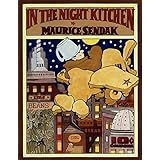 Also Sendak, perhaps a less-read book than Wild Things. Again, Sendak doesn’t shy away from hard themes. Again, his specific is also our universal. Mickey’s dream is specific to Mickey, and the illustrations are charmingly old-style. But the dream as hyper-reality is real for all kids. And the mix of humor and slighly menacing elements is why children continue to love these books long after they grow up. Sendak doesn’t ever feel the need to explain, so you never quite reach the end of his books.
Also Sendak, perhaps a less-read book than Wild Things. Again, Sendak doesn’t shy away from hard themes. Again, his specific is also our universal. Mickey’s dream is specific to Mickey, and the illustrations are charmingly old-style. But the dream as hyper-reality is real for all kids. And the mix of humor and slighly menacing elements is why children continue to love these books long after they grow up. Sendak doesn’t ever feel the need to explain, so you never quite reach the end of his books. - Love You Forever
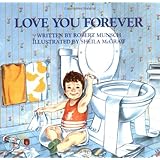 I never thought I would put this on a “best of” list. The first time I read it out loud to a child, I was horrified. What an awful book! Its basic plot is this: A mommy loves her baby so much! She loves him even though he unrolls all the toilet paper. She loves him even when he’s an annoying teen. She loves him when he grows up, so much so that she brings a ladder and climbs in his bedroom window. Uh…what was that? She is so attached to her now-grown baby that she’s stalking him? I have to say, I was truly offended at first reading. And maybe second, third, fourth, and fifth! Yes, of course I understood the underlying philosophy of this book. Unconditional love is a wonderful thing. But like all the best children’s books, this one is just plain weird! The funny thing is, my daughter was obsessed with it. She made me read it over and over. She made me sing the song. So it counts as a great book, though just looking at the cover still gives me the willies.
I never thought I would put this on a “best of” list. The first time I read it out loud to a child, I was horrified. What an awful book! Its basic plot is this: A mommy loves her baby so much! She loves him even though he unrolls all the toilet paper. She loves him even when he’s an annoying teen. She loves him when he grows up, so much so that she brings a ladder and climbs in his bedroom window. Uh…what was that? She is so attached to her now-grown baby that she’s stalking him? I have to say, I was truly offended at first reading. And maybe second, third, fourth, and fifth! Yes, of course I understood the underlying philosophy of this book. Unconditional love is a wonderful thing. But like all the best children’s books, this one is just plain weird! The funny thing is, my daughter was obsessed with it. She made me read it over and over. She made me sing the song. So it counts as a great book, though just looking at the cover still gives me the willies. - Jamberry
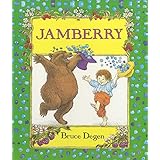 Another great one from Bruce Degen. This book practically screams “summer!” The wordplay is fantastic. Do you ever have days with your kids where some word seems to dominate the day and get attached to everything? Like for some reason “fruit” is said and then along the day you have “shoefruit” and “carfruit” and (ick) “nosefruit”? That’s what this book is like. Lines like “Hatberry, Shoeberry in my Canoeberry” and “Boomberry, Zoomberry, Rockets shoot by” are so fun to say that they become participatory as you read them.
Another great one from Bruce Degen. This book practically screams “summer!” The wordplay is fantastic. Do you ever have days with your kids where some word seems to dominate the day and get attached to everything? Like for some reason “fruit” is said and then along the day you have “shoefruit” and “carfruit” and (ick) “nosefruit”? That’s what this book is like. Lines like “Hatberry, Shoeberry in my Canoeberry” and “Boomberry, Zoomberry, Rockets shoot by” are so fun to say that they become participatory as you read them. - Yum Yum Dim Sum
- My First Book of Sushi
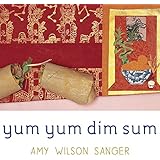 These two books are from the “World Snacks” series by Amy Sanger. I guess the publisher might say that the idea is to foster interest in unusual foods. However, for our kids, unusual foods were the usual. We still go to the dim sum restaurant which we call the site of our son’s “first meal.” Why? We had been going through all the usual steps to introduce him to single food purees, and he was having none of it. Yech! He’d just spit them out. But one day when he was nine months old we brought him to this restaurant and the smell clearly excited him. He was sitting there in his bucket seat smacking his lips. I asked my husband, “So…how far away is the nearest hospital?” and we just went for it. His first solid meal was dim sum, and there was no going back. I feel like these books celebrate multicultural America better than almost anything. If we eat each other’s foods, we gain a little more understanding of each other.
These two books are from the “World Snacks” series by Amy Sanger. I guess the publisher might say that the idea is to foster interest in unusual foods. However, for our kids, unusual foods were the usual. We still go to the dim sum restaurant which we call the site of our son’s “first meal.” Why? We had been going through all the usual steps to introduce him to single food purees, and he was having none of it. Yech! He’d just spit them out. But one day when he was nine months old we brought him to this restaurant and the smell clearly excited him. He was sitting there in his bucket seat smacking his lips. I asked my husband, “So…how far away is the nearest hospital?” and we just went for it. His first solid meal was dim sum, and there was no going back. I feel like these books celebrate multicultural America better than almost anything. If we eat each other’s foods, we gain a little more understanding of each other. - Where are you, Blue Kangaroo?
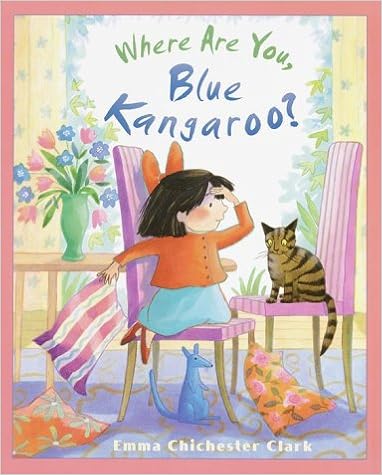 Losing things dear to you is a common theme in childhood, and this book playfully helps children normalize that fear. That darn Blue Kangaroo keeps getting away from Lily, till one day she devises a clever way to keep him close. I like that she solves her problem herself, and that Blue Kangaroo himself seems independent. (I’m surprised to see that it’s apparently out of print?)
Losing things dear to you is a common theme in childhood, and this book playfully helps children normalize that fear. That darn Blue Kangaroo keeps getting away from Lily, till one day she devises a clever way to keep him close. I like that she solves her problem herself, and that Blue Kangaroo himself seems independent. (I’m surprised to see that it’s apparently out of print?) - Olivia (series)
Olivia is a wonderful series of books to read with your strong-minded girl (or a girl you hope to encourage to be strong-minded). Olivia has opinions about everything, she has a big, loud voice, and she loves to accessorize. She’s a girly-girl in a pig’s body who doesn’t care what anyone else thinks. Go, Olivia! 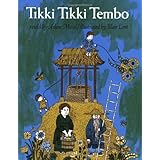 Tikki Tikki Tembo
Tikki Tikki Tembo
This was a favorite from my childhood. Like Wild Things, it’s both a book of its time and a book for any time. According to Wikipedia, “The book is controversial because it appears to retell a Japanese story and because it does not portray Chinese culture accurately.” I think sometimes people take things a little too seriously! This is clearly not a book of history, but rather a sort of fairy tale/origin story about Chinese names. I never took it literally as a child, and neither did my children, as far as I know! Set in China, with stunning illustrations that I remembered vividly from when I was young, the book follows two brothers, one of whom is named in “ancient Chinese tradition” with a hugely long name (which consequently is very fun and funny for children to say). The book is about how silly parents can be (giving their children such cumbersome long names) and how reasonable they can be (“don’t play on the well”). It’s about the absurdity of being a child who isn’t taken seriously, and it’s about remembering that real actions do have real consequences. Cultural inaccuracy aside, I think it still deserves a place on our bookshelf.- Voyage to the Bunny Planet
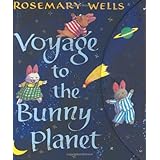 Rosemary Wells wrote many great books. We loved this little three-book set both for the concrete images they contain and also the theme. All the kids in these books are having problems. Life is not perfect. But somehow, little things in life can make it all better. A miserable trip to see relatives becomes a voyage to the Bunny Planet. The imagery—moss pillows, the smell of ripe tomatoes, the salt of the sea—are immediate and visceral. Great bed-time reading.
Rosemary Wells wrote many great books. We loved this little three-book set both for the concrete images they contain and also the theme. All the kids in these books are having problems. Life is not perfect. But somehow, little things in life can make it all better. A miserable trip to see relatives becomes a voyage to the Bunny Planet. The imagery—moss pillows, the smell of ripe tomatoes, the salt of the sea—are immediate and visceral. Great bed-time reading. - Madeline
This book is like a gift from the past. The incredible drawings. The strange clothing and manners. The almost-stilted, unusual language. It’s a book not associated with our culture at all, yet strangely an indelible part of it. - Frederick
 Another one-name character who remains indelible. I love all of Lionni’s books, but this one especially. We have my childhood copy, and when I first read it to my son, I felt like I was revisiting a place I knew well as a child. With so little detail, the illustrations are vividly emotional. And shy, quiet children will feel comforted that Frederick finds his place in his little society of mice.
Another one-name character who remains indelible. I love all of Lionni’s books, but this one especially. We have my childhood copy, and when I first read it to my son, I felt like I was revisiting a place I knew well as a child. With so little detail, the illustrations are vividly emotional. And shy, quiet children will feel comforted that Frederick finds his place in his little society of mice. - Dr. Seuss
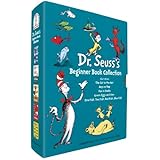 There’s almost no need to praise Dr. Seuss because it’s all been said. His rhymes are like no one else’s. And like the best children’s books, life in here isn’t all sunshine and roses. The Cat in the Hat is quite menacing. Some of the creatures are unsettling in their strangeness. When will those darn Sneetches ever learn? Children get to experience the full range of life’s pleasures and frustrations in these books, all with amazing rhymes and clever made-up language.
There’s almost no need to praise Dr. Seuss because it’s all been said. His rhymes are like no one else’s. And like the best children’s books, life in here isn’t all sunshine and roses. The Cat in the Hat is quite menacing. Some of the creatures are unsettling in their strangeness. When will those darn Sneetches ever learn? Children get to experience the full range of life’s pleasures and frustrations in these books, all with amazing rhymes and clever made-up language. - DK Books
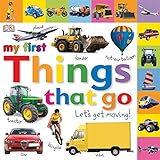 If you have kids who love words, you have to go out and get some DK books. These books are deceptively simple. They have a theme, lots of photographs, and words. Often there’s no explanation, no whimsy whatsoever. Just words, words, and more words. Clear, obvious photos (some of them charmingly British, at least in the DK books that were available when my son was small). My kids used these books to make up their own stories. On the food pages, they’d decide what to eat for lunch. On the clothing pages, they’d decide what to wear. And of course, vehicle maniacs in your life need these books. DK loves anything on wheels!
If you have kids who love words, you have to go out and get some DK books. These books are deceptively simple. They have a theme, lots of photographs, and words. Often there’s no explanation, no whimsy whatsoever. Just words, words, and more words. Clear, obvious photos (some of them charmingly British, at least in the DK books that were available when my son was small). My kids used these books to make up their own stories. On the food pages, they’d decide what to eat for lunch. On the clothing pages, they’d decide what to wear. And of course, vehicle maniacs in your life need these books. DK loves anything on wheels!

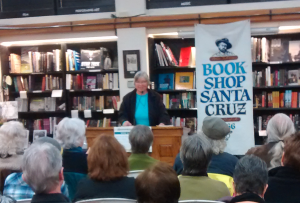
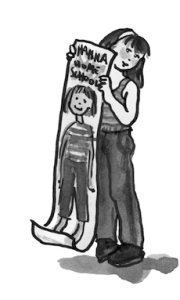

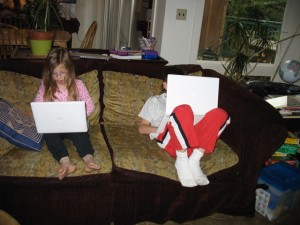 Even if you don’t want your kids to play on computers, start them early learning that it’s a valuable tool. (Our family had a no-screen policy in our house when our kids were little and continued with a limited-screen policy for a few more years.) “I don’t know–let’s look it up” is the most empowering thing a parent can say to a child. These days it doesn’t take a trip to the library (unless that’s where you get your Internet access). Starting very early, make sure to talk to them about how to decide whether to trust Internet sources.
Even if you don’t want your kids to play on computers, start them early learning that it’s a valuable tool. (Our family had a no-screen policy in our house when our kids were little and continued with a limited-screen policy for a few more years.) “I don’t know–let’s look it up” is the most empowering thing a parent can say to a child. These days it doesn’t take a trip to the library (unless that’s where you get your Internet access). Starting very early, make sure to talk to them about how to decide whether to trust Internet sources.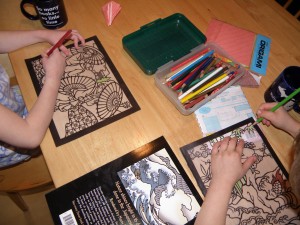
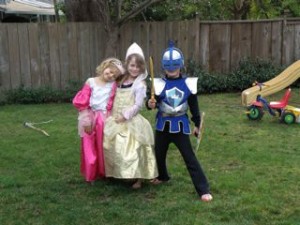 When I started homeschooling my daughter, we were in a crisis. We had invested so much in trying to get school to work for her. We didn’t know a single homeschooler. And because of our daughter’s special needs, we didn’t really have school friends with kids her age, either. Our first few months of homeschooling were pretty darn awful. We sat around being angry at each other and lonely for friends. Finally, we joined a homeschool program to meet people. If you’re more outgoing, you might not need a formal group, but introverted me and my unusual daughter needed this. It changed our lives to be part of a group that offered both structured and unstructured time, and through this group we finally made friends.
When I started homeschooling my daughter, we were in a crisis. We had invested so much in trying to get school to work for her. We didn’t know a single homeschooler. And because of our daughter’s special needs, we didn’t really have school friends with kids her age, either. Our first few months of homeschooling were pretty darn awful. We sat around being angry at each other and lonely for friends. Finally, we joined a homeschool program to meet people. If you’re more outgoing, you might not need a formal group, but introverted me and my unusual daughter needed this. It changed our lives to be part of a group that offered both structured and unstructured time, and through this group we finally made friends.

